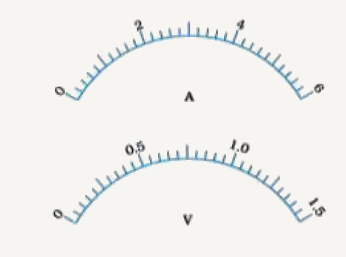Keeping the resistance constant, the potential difference applied across the ends of a component is halved. How does the current change?Solution in Gujrati
The current becomes half the initial current.
Topper's Solved these Questions
- BOOK - KUMAR PRAKASHANCHAPTER - ELECTRICITYEXERCISE - VALUE BASED QUESTIN WITH ANSWERS15videos
ELECTRICITY
- BOOK - KUMAR PRAKASHANCHAPTER - ELECTRICITYEXERCISE - PRACTICAL SKILL BASED QUESTION WITH ANSWERS20videos
ELECTRICITY
- BOOK - KUMAR PRAKASHANCHAPTER - ELECTRICITYEXERCISE - OBJECTIVE QUESTIONS AND ANSWERS (Choose the correct option from those given below each question: )55videos
ELECTRICITY
- BOOK - KUMAR PRAKASHANCHAPTER - MAGNETIC EFFECTS OF ELECTRIC CURRENT EXERCISE - VALUE BASED QUESTIONS WITH ANSWERS15videos
MAGNETIC EFFECTS OF ELECTRIC CURRENT
Similar Questions
Medha observed that the tubelights in the corridor of her school were always switched on the whole day. She brought the matter to the notice of her class teacher who talked to the Principal about it. The Principal took immediate action.
Medha helped this way to reduce air pollution. Explain how.02:51View SolutionThe scales of an ammeter and a voltmeter are shown below:

What is the range of the ammeter and the range of the voltmeter?01:27View SolutionThe SI unit of electric charge is the ……………… .
01:04View SolutionShalini and his brother Amey observed a water-pump working , Shalini inquired how an electric motor works . Amey collected different parts of an electric motor e.g., field - magnets , cabon- brushes , armature , battery , switch, connecting wire , split - rings , etc, and showed them to Shalini . Amey then explained how an armature could rotate.
State the principle how an electric motor to works .02:01View SolutionLet the resistance of an electrical component remain constant while the potential difference across the two ends of the component decreases to half its former value. What change will occur in the current through it ?
03:48View SolutionKeeping the resistance constant, the potential difference applied across the ends of a components is halved. By how much does the current change?
02:58View SolutionA potential difference of 20 volts is applied across the ends of a resistance of 5 ohms. What current will flow in the resistance?
01:50View SolutionHow does the mobility of electrons in a conductor change, if the potential difference applied across the conductor is doubled, keeping the length and temperature of the conductor constant ?
View SolutionLet the resistance of an electrical component remains constant while the potential difference across the two ends of the components decreases to half of its former value. What change will occur in the current through it ?
View SolutionLet the resistance of an electrical component remains constant while the potential difference across the two ends of the component decreases to half of its former value. What change will occur in the current through it?
02:00View SolutionIf the value of the potential difference between the ends of an electric component is halved, what will be the change in the value of the flowing current?
02:23View SolutionHow does the mobility of electrons in a conductor change, if the potential difference applied across the conductor is doubled, keeping the length and temperature of the conductor constant ?
02:11View SolutionLet the resistance of an electrical components remains constant while the potential difference across the two ends of the component decreases to half to its former value. What change will occur in the current through it?
01:49View SolutionLet the resistance of an electrical component remain constant while the potential difference across the two ends of the component decreases to half its former value. What change will occur in the current through it ?
02:09View SolutionLet the resistance of an electrical component remain constant while the potential difference across the two ends of the component decreases to half of its former value. What change will occur in the current through it?
04:17View Solution

